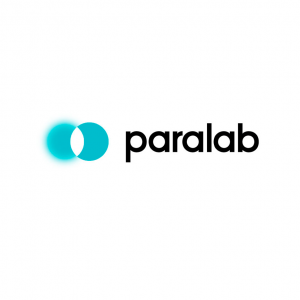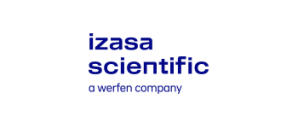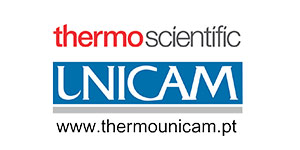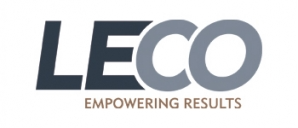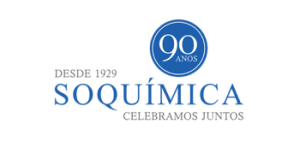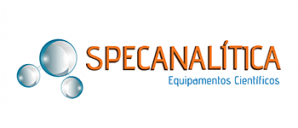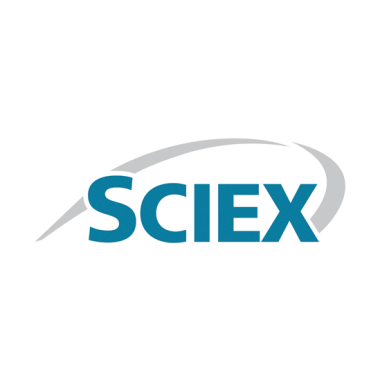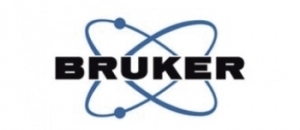Program & Speakers
Speakers

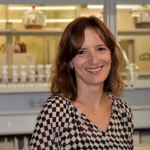


João Pedro Conde
INESC-MN / IST-ULisboa
Miniaturizing chromatography techniques using microfluidic structures
Biography


Henrique Reguengo
Centro Hospitalar Universitário de Santo António
A cromatografia no laboratório clínico
www

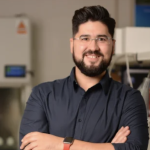


Armando Silvestre
CICECO and Department of Chemistry, University of Aveiro
Use of ionic liquids and eutectic solvents in biomass extraction and processing: Advantages and challenges
BiographySOCIAL PROGRAM
Conference Dinner
Salão de eventos da Ordem dos Médicos,
Av. Alm. Gago Coutinho 151,
1749-084 Lisboa.
COMPANY COMMUNICATIONS:
PARALAB
PARALAB: Ion Chromatography Applications: Cost-Effective Solutions for Quality Assurance in Drinking Water, Wine Organic Acids and Environmental Analysis
UNICAM
Analysis of Sugars using Ion Chromatography and Amperometric Detection
Numerous biological processes, including cellular communication, gene expression, immunity, organism defence mechanisms, and growth and development, depend on carbohydrates. They are challenging to analyse because they are structurally identical, highly polar compounds, and lack an appropriate chromophore. Silica-based amino-bonded or polymer-based, metal-loaded, cation-exchange columns with refractive index (RI) or low-wavelength ultraviolet (UV) detection have been used in methods for the liquid chromatographic examination of carbohydrates. The uses of RI and low-wavelength UV detection technologies in trace carbohydrate analysis are constrained by their poor sensitivity and selectivity. There is also a common HPLC method known as Hydrophilic Interaction Liquid Chromatography (HILIC), which uses fluorescent tag detection and derivatization. Additionally, HILIC demands mobile phases with a high organic content (50–80% acetonitrile), which could pose issues with sample solubility.
High-performance anion exchange (HPAE), an enhanced chromatographic method, makes use of the weak acidity of carbohydrates to produce extremely selective separations at high pH utilising a strong anion-exchange stationary phase. It enables direct quantification of non-derivatized carbohydrates at high femtomolar concentration levels with minimal sample preparation and cleanup when combined with pulsed amperometric detection (PAD). Analytes that can ionise at high pH levels can be separated using HPAE chromatography. pKas for carbohydrates normally vary from 12 to 13. The analyte is ionised in solution once the pH exceeds its pKa value. Eluents based on hydroxide are used to do this.
Eluents based on hydroxide are used to do this. Additionally, separations at high pH settings are now possible because to the development of strongly cross-linked ethylvinyl benzene-divinyl benzene pellicular resins with a wide pH stability range (0 to 14). Small anion-exchange microbeads with anion-exchange functional groups are permanently electrostatically linked to a bigger cation-exchange resin particle in the nonporous resins of the columns. Because the resin is nonporous, band-broadening is reduced and a wide range of carbohydrates, including branched oligosaccharides, are separated very efficiently.Pulsed amperometric detection can be used to detect underivatized analytes. A waveform is a representation of the possible variations. As a result of the fluctuations, the electrode surface experiences oxidising and reducing conditions, which in turn lead to the oxidation of analytes bound to the working electrode surface. Only substances with functional groups that oxidise at the detecting voltage used are detected by pulsed amperometry. Since many potentially interfering species cannot be oxidised or reduced, they are not identified and detection for electroactive species is sensitive and highly selective. It's also crucial to remember that cationic or neutral sample components in the matrix elute in or very near the column's empty space. As a result, even if the neutral or cationic sample components are oxidised, the important carbohydrate components are not affected.
The technology involved will be demonstrated, and some chromatograms for chlorate/perchlorate and polar pesticides in milk and other matrixes will be shown.
Other special detectors like Orbitrap Analyzer mass spectrometer, have been also tested to support metabolomic profiling using Ion Chromatography.
LECO
Characterization of Extractables from Common Pharmaceutical Packaging Materials with GCxGC and HR-TOFMS
SOQUÍMICA/AGILENT
Work more efficiently with Agilent's new intelligent LC-Triple Quad and LC/Q-TOF solutions.
Start building the lab of the future today.
Many laboratories face constant regulatory changes and the need to analyze increasingly complex data, while instrumentation and resources remain constant. Smart, advanced instrumentation that integrates complete workflows and offers greater time control will allow you to focus more on the scientific and analytical aspects. Be inspired by new LC/MS instruments for smarter labs.
We look at the latest advances in Agilent mass spectrometry, such as SWARM autotuning and telemetry logging for maintenance information. We also harmonize method transfer between Q-TOF and TQ mass spectrometers and go a step further in autonomous instrument operation with "Intelligent Reflex".
The new 6495 triple quadrupole LC/MS system is a high-performance, ultra-sensitive system for research and analytical laboratories. With innovative iFunnel technology, it achieves detection limits in the ppq range for difficult analytes in complex matrices.
It offers high accuracy with the shortest dwell times and features integrated instrument intelligence for uninterrupted routine analysis.
The Revident LC/Q-TOF is a state-of-the-art quadrupole time-of-flight mass spectrometer with advanced electronics, implemented instrumental intelligence and ultra-fast detector. It is ideal for routine screening, high resolution mass quantification and identification of unknown substances.
The system is perfect for food safety, environmental analysis, metabolomics, pharmaceutical and forensic applications. Innovative technologies such as "Intelligent Reflex", pre-planned tuning and easy-to-use data logging software boost productivity and increase laboratory efficiency.
SCIEX
From the tap to our home: the analysis of per- and polyfluoroalkyl substances (PFAS) in matrices relevant for human exposure
Poly- and perfluoroalkyl substances (PFAS) are well-known environmental contaminants and are widely detected in humans and wildlife, water, soil, and air. PFAS are primarily used for their stain repellency properties as well as their surfactant characteristics, such as in aqueous film-forming foams (AFFF) to combat petroleum fires. Even though there are an estimated 5,000 unique PFAS manufactured, most monitoring efforts are focused on only 20-30 compounds.
A straightforward targeted detection method was developed with the SCIEX Triple Quad 7500 system using a 2µL injection to reduce matrix interference in complex food matrices. Sub-µg/kg LOQs below the target LOQs for 4 regulated PFAS based on EU 2022/1431 recommendation were achieved.
Non-targeted data acquisition using high resolution accurate mass spectrometry is beneficial for elucidating unknown compound structures, such as PFAS in complex samples. However, candidate structure assignment depends crucially on the collection of high-quality MS/MS spectral data. Traditional fragmentation methods using collision-induced dissociation (CID) can be too aggressive to form diagnostic MS/MS spectra. Alternatively, electron activated dissociation (EAD) has shown potential as a form of fragmentation to produce more robust spectra.
This study evaluated the use of EAD fragmentation qualitative PFAS structure elucidation and compared the results to those produced with MS/MS spectra achieved using traditional CID generated data (ZenoTOF 7600).
BRUKER
Solving the PFAS Challenge:
Comprehensive Screening of 5,000 Suspects
PFAS, or per- and polyfluoroalkyl substances, represent a group of human-made chemicals characterized by the presence of carbon-fluorine bonds. These compounds have gained considerable attention due to their widespread use in various industrial and consumer products, including non-stick cookware, water-resistant textiles, and firefighting foams. PFAS are persistent in the environment and have been detected in air, water, soil, and even in the blood of humans and wildlife.
The complexity of identifying PFAS in samples arises from several factors. Firstly, the extensive variety of PFAS compounds, estimated to number in the thousands, poses a significant challenge. These substances can have different chain lengths, functional groups, and substitution patterns, making a comprehensive analysis difficult. The diverse nature of PFAS also means that no single analytical technique is universally effective for detecting all of them.
Mass spectrometry is a powerful tool commonly employed for PFAS analysis due to its high sensitivity and ability to provide structural information. However, the analysis of PFAS by mass spectrometry is complicated by their low ionization efficiency and the lack of distinctive fragmentation patterns. Furthermore, isomeric forms of PFAS can exhibit nearly identical mass spectrometric profiles, making it challenging to differentiate between them accurately.
Another challenge lies in the low concentrations at which PFAS are often found in environmental and biological samples. The need for sensitive and selective methods becomes crucial for accurate quantification. Advances in mass spectrometry techniques, such as high-resolution mass spectrometry, have improved the ability to distinguish between closely related PFAS compounds and detect them at trace levels. Additionally, the development of tandem mass spectrometry methods and the use of isotopically labeled internal standards enhance the accuracy of PFAS quantification.
In summary, the identification of PFAS in samples by mass spectrometry is a complex task due to the structural diversity of these substances, their low ionization efficiency, and the challenge of differentiating between isomeric forms.
Bruker, leveraging innovative technology like trapped ion mobility spectrometry coupled with time-of-flight (TIMS TOF), presents a comprehensive and automated solution for the precise identification of PFAS. This advanced technology enhances the capabilities of mass spectrometry by providing an additional dimension of separation based on the mobility of ions in the gas phase. The TIMS TOF approach enables researchers to overcome the challenges associated with isomeric PFAS, offering improved selectivity and accuracy in identifying these substances in complex matrices.

